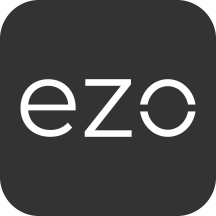The Asset management landscape has been evolving rapidly amidst digital transformation over the past decade – and a global pandemic for the past year. 2020 saw an increased inclination towards emerging digital transformation trends in asset management. A cloud-based tracking solution can help organizations significantly improve asset management rate of returns, save money, and improve overall business efficiency.
The COVID-19 pandemic has further highlighted the importance of centralized asset management with mechanisms for powerful remote management and full transparency. With most of the industrial sectors in lockdown, cloud-based, centralized asset tracking provided unique avenues to continue business.
Let’s explore some important asset management trends in the market:
Rise of smartphone barcode scanning: With a rise in enterprise mobility, employees need to update work progress on the go. A variety of tracking solutions offer mobile tracking applications that enable users to scan assets right from their phones. All asset events can be recorded timely with smartphone barcode scanning specially during remote site projects.
Tracking Intellectual Property (IP) assets: Company documents and databases containing sensitive information – employee, financial, procurement and more – need to be maintained and tracked in a secure manner. Recently, due to records being maintained digitally, such files are increasingly housed and tracked online. Not only does this secure information, it also enables companies to monitor and control access permission to this information via a tracking solution.

Adoption by smaller organizations: Stricter regulations like audit compliance have prompted smaller organizations and public work companies to adopt tracking solutions. Real time tracking of assets enables smaller organizations to establish more credibility. Robust asset management improves accountability for smaller organizations making it easier to meet stakeholder requirements.
Increase in remote asset tracking: Especially in 2020 with the spread of the COVID-19 pandemic, a lot of organizations were forced to operate remotely. This led to a significant increase in adoption of asset tracking services to monitor movement of items across remote locations.
Asset management trends: What to expect in 2021?
The tracking market is growing at a rapid pace. Here are some key asset management trends to watch in 2021:
Increase in mobile asset management
According to recent statistics, 71% of the enterprises list mobility as a top priority to remain competitive. Enterprise mobility means enhanced ability of employees to work outside the office using mobile and cloud computing. With the increase of mobile devices in the workplace especially in remote locations, organizations need a tracking solution to manage their operations.
Luckily, the majority of the tracking softwares offer a mobile application where employees can directly log work progress from their smartphones. The use of mobile tracking applications is common in the construction industry as workers are required to log project updates from site. More industries are expected to adopt mobile tracking practices as the work dynamics changes in 2021.
Read more: 4 Ways to Track Assets in Real Time with Mobile Inventory Management for Remote Warehouses
Rise in integrated solutions
Companies often deploy numerous resources to carry out tasks efficiently. A common practice is to use single sign-on software along with the main management system. While this may streamline employee log-ins, there is an overload of data that needs to be documented. To avoid unnecessary information being piled up organizations opt for integrated management solutions.
A robust cloud-based asset management tracking software offers integrations with business enablement tools for issue resolution and customer data management. This is highly effective for both small and large organizations as they can update all business processes on a central platform.

Tracking small tools and consumables
Traditionally, companies have focused on tracking large, expensive capital equipment. However, evolving business trends such as increased need for agile, mobile operations have prompted organizations to track inventory on a smaller scale such as small tool tracking.
Industries like construction and healthcare have started to use tracking software to monitor consumables as well as smaller assets. The biggest advantage of tracking every type of capital is control of asset movements throughout the organization. Regardless of the size, you can always keep track of where your assets are and what they are being utilized for. In this way, tracking helps minimize asset loss through improved transparency.
Data driven transparency for greater visibility
In 2021, data driven transparency is key. Real time monitoring of assets can help assess the damage and mitigate future risks. While companies have access to tons of asset related information readily available, they don’t always know how to best utilize it.
Organizations that track, store and analyse data have a marked advantage. Asset management trends in 2021 will heavily revolve around solutions that provide insightful reports and market analysis. In depth study of business asset information reveals useful data that can then be used to drive the decision making process. With the right tracking solution, well informed business owners are capable of staying ahead of the market trends with improved data integrity.
Read more: Data Driven Analytics: How to Use a Tracking Software to Achieve Business Key Performance Indicators
Adoption of prevention strategies
When it comes to asset management, reactive strategies are particularly considered damaging and should be avoided at all costs. To minimize last minute breakdowns, there will be increased adoption of preventive strategies when it comes to maintenance, cloud security and even cyber threats.

Due to an increase in remote asset management techniques, there is a need for secure cloud computing. In order to implement a successful security strategy it is important to establish baseline security, critical data points and who has access to what information. Permission control plays a huge role in laying down a reliable security plan.
Asset tracking management is moving to the cloud
Asset management is constantly evolving to incorporate the latest technologies to bear the greatest rate of return for businesses. As the workflows transform over the next couple of years, companies must opt for automation of all workflows. Technologies like RFID and mobile tracking solutions along with Internet of Things (IoT) will make it necessary to shift to the cloud for businesses.
Flexibility in data migration will enable companies to take full advantage of the evolving asset management landscape. This is only possible if organizations invest in a cloud based tracking system to record asset activities. Create a hierarchy of users so that it’s easy to implement a permission access strategy for tight security. Once you migrate to a cloud based software, minimize manual tracking events so that everything is digitalized and transparent.
About EZOfficeInventory
EZOfficeInventory is a leading asset tracking software. It allows you to track, maintain, and report on inventory from anywhere, at any time. We offer a free 15-day trial – no credit card required!








